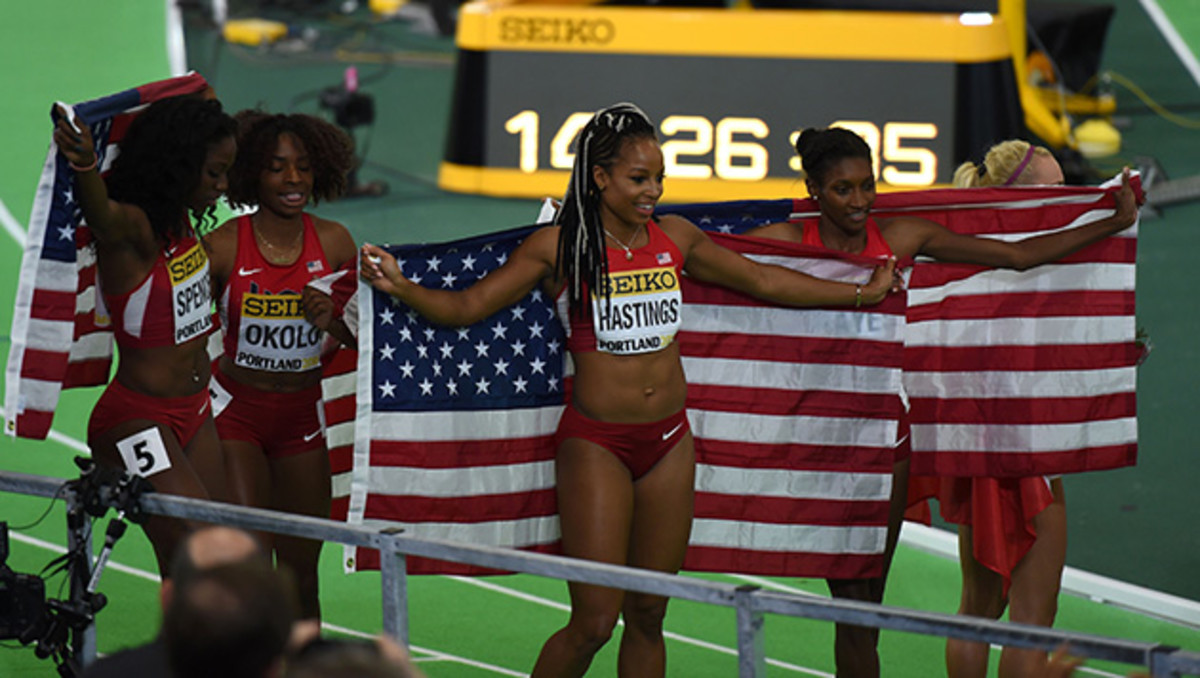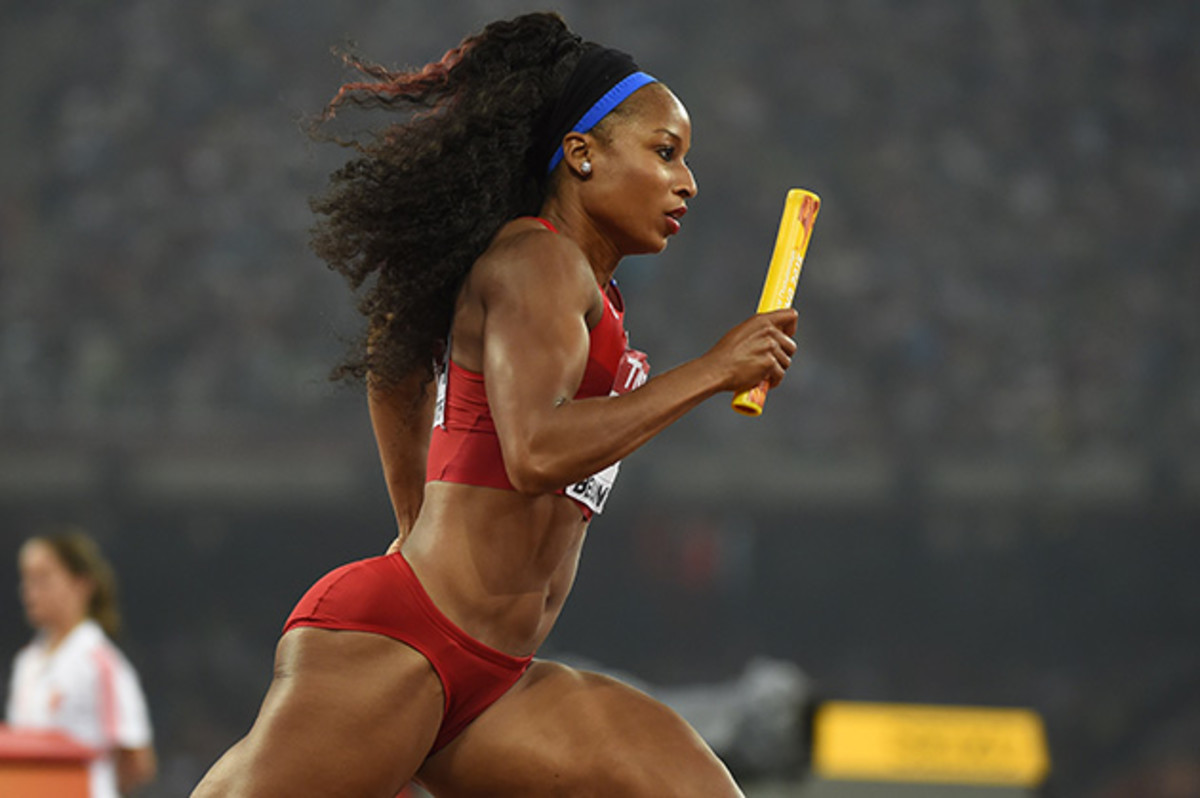Hastings preps for Olympics with sprint endurance training

During Olympic and World Championship competition for the U.S., Natasha Hastings may sprint through the 400 meters. But when she trains, she has a different mindset, one that permeates her entire preparation.
“Because I’m a quarter-miler most people think I do 500s and 600s and over distance (training),” she says. “I train like a short sprinter. I do a lot of 150s, 200s, 250s. The 250s are my sweet spot, I love 250s. I’m a 400 runner, but when coach says I have something over 300, I am like ‘Oh my God, why?’”
Hastings’ life, though, isn’t all about 250s. She trains on the track five days a week and lifts three days. A typical weight-track day starts at 6 or 7 a.m. with a quick fruit-veggie-protein blend. “I fall into the everything in moderation. I do take my diet very serious,” she says. “In the season I’m very mindful of the things I eat, but when I am to hard or too strict, I am setting up for failure. If I want a scoop of ice cream at the end of the week and I feel I had a good week of training, then I’m going to have a scoop. But not 10 scoops. Everything has to be done in moderation and you have to know your body.”

After that early-morning smoothie, Hastings hits the gym for 60 to 90 minutes and then either heads straight to the track or takes a short break before two or two-and-a-half hours of running, with her work day typically over by 1 p.m., allowing her time for recovery—massage or chiropractor included.
The mix of day means a mix of gear for the runner, something she takes in stride. I have three or four pairs of shoes in my bag,” she says. “Being a sprinter, I have different shoes for different things. I’m constantly changing shoes."
• MORE EDGE: Inside Nick Goepper's neuromuscular training, nutrition
As an Under Armour sponsored athlete, Hastings lifts in a trainer and then warms up on the track in the brand's shoe that has shock absorption and extra support. When she starts her drills, low-intensity track time or grass workouts she switches to a more lightweight running shoe. For the high-speed track work, that’s when she moves to spikes.
Traveling throws off the training, though. “Everyone travels different and if it is a long travel, I am one of those people who swells on flights,” she says. “If I have to train that day, it would have to be something very light to get that fluid out of my legs. It does throw a monkey wrench into training.”
Hastings thinks long term with the travel, knowing she can’t overwork herself after a lengthy trip just to risk an injury that impacts the next days, weeks or even months of her career. And while Hastings thinks futuristic with training, that creates a bit of a tricky balance in her mind, as she doesn’t want to dwell on future meets—and the stress it brings.

Looking into 2016, for example, the obvious looms: Rio de Janeiro. But before Rio, before the Olympics, comes the U.S. Olympic Team Trials in Eugene, Ore., in July. “Every four-year occasion it may or may not be an appearance or berth at the Olympics,” she says. “It is stressful, but these are the moments we live for and strive for. It is a serious time.”
Hastings, though, now 29, approaches that mental and physical aspect different than when she was first making the Olympics at age 22. “The older we get the smarter we have to be,” she says. “By no means am I old, but the same things I could do or have to do at 22 I don’t necessarily have to do. I think as we get older in sports, learning your body and learning the things your body responds well to or doesn’t respond well to is important.”
For example, Hastings knows she loves a hard-sprint workout. But she also knows her body needs time to bounce back from that training. “If preparing for a meet, I have to adjust the days to give myself enough time between the workout and competition to reap the benefit from the workout but not hinder me,” she says. “It is important to learn those things and how to train optimally without hurting myself.”
• MORE EDGE: Heather Jackson's ultimate workout regimen
That’s the workout, but the mental side has evolved too. Ever since age 15 when she was told she would never make an American team, she has thrived on proving people wrong—and has made the U.S. squad every year since. That overarching goal sets the standard for everything. But while she flourishes on the thrill of making goals and achieving them—including reveling in the underdog role and proving others wrong—her experience has also helped her deal with going just as hard when specific goals aren’t reached.
The SI Extra Newsletter Get the best of Sports Illustrated delivered right to your inbox
Subscribe
“One of the things I’ve learned in getting older is to be in the moment,” she says. “I focus on the process and the end result will take care of itself. Relaxing and taking some time (is part of that) and when it comes time to focus on a workout, I focus on a workout that day. When it comes to the Olympic trials, I stay in that moment. It is stressful and I think about it every day and am hungry and want it, but it is more enjoyable to focus on the thing I have to get done right now.”
Tim Newcomb covers stadiums, sneakers and training for Sports Illustrated. Follow him on Twitter at @tdnewcomb.
